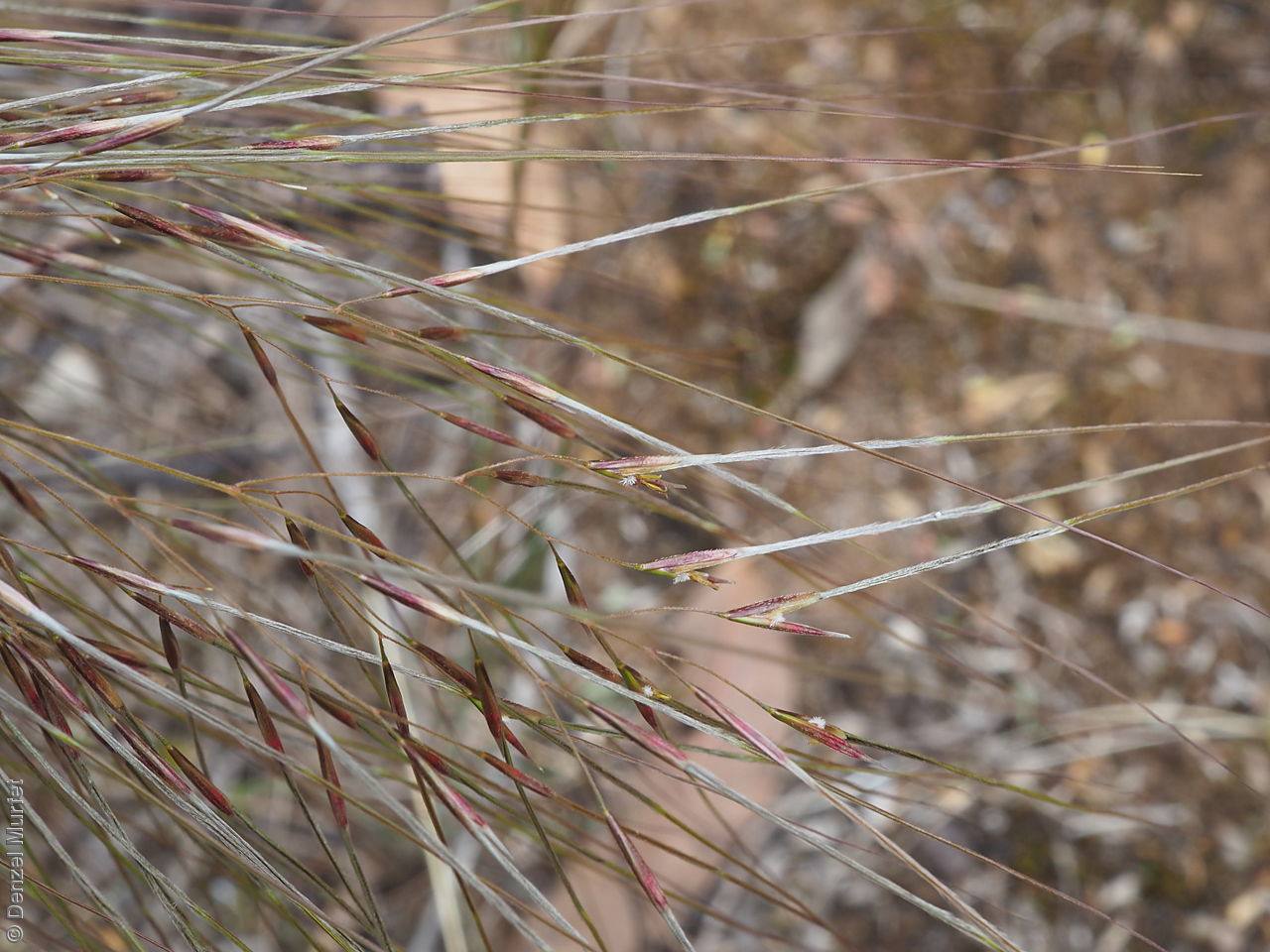













Botanical art
Prior names
Stipa horrifolia
Stipa luehmannii
Stipa drummondii
Etymology
Austrostipa from the Latin 'auster' meaning south and the genus Stipa, referring to the genus being allied to Stipa but restricted to Australia. Drummondii named after James Drummond (1786-1863), a Scottish born botanist and naturalist who was the curator of the Government Gardens in Cork, Ireland and an early settler in Western Australia.
Distribution and status
Found in the southern part of South Australia growing in a wide range of habitats on rocky, sandy and sandy loam soils in grassland, mallee and shrubland. Also found in Western Australia, New South Wales and Victoria. Native. Common in South Australia. Common in the other states.
Herbarium regions: Nullarbor, Flinders Ranges, Eastern, Eyre Peninsula, Northern Lofty, Murray, Yorke Peninsula, Southern Lofty, South Eastern, Green Adelaide
NRM regions: Adelaide and Mount Lofty Ranges, Alinytjara Wilurara, Eyre Peninsula, Northern and Yorke, South Australian Arid Lands, South Australian Murray-Darling Basin, South East
AVH map: SA distribution map (external link)
Plant description
Tufted annual or perennial grass to 1 m high, with culms unbranched and nodes pubescent but hidden by the broad sheaths. Leaves densely pubescent with blade rather stiff, 'not pungent' (but often is); flat to slightly inrolled, to 20 cm long and 6 mm wide; sheaths stout and loose around the densely pubescent culm. Inflorescence a dense spreading panicle to 40 cm long with the base partly concealed by the uppermost leaf-sheath and with purple glumes to 12 mm long. Flowering between September and December.
Key to this species: awn falcate (curved bristle at right angle to the column); lemma narrow and needle-like; column hairs 0.3-1.5 mm long. Fruits are dark- brown linear-ellipsoid lemma to 7 mm long, sometimes with a slight constriction just below apex and a finely granular surface covered in white hairs, often sparse toward the apex; callus to 2.5 mm long; awn falcate to 90 mm long with the column slender, densely pubescent with hairs to 1.5 mm long; palea slightly shorter than lemma, with a sparse line of hairs down the centre. Seeds are yellow-brown narrow ellipsoid grain to 3.5 mm long within the lemma. Seed embryo type is lateral.
Seed collection and propagation
Collect seeds between October and February. Use your hands to gently strip the seeds (lemma) off the mature fruiting spike, those that are turning brown. Mature seeds will come off easily compare to the immature seeds that remain on the spike. Alternatively, you can break off the whole fruit spike to allow some of the seeds to mature further. Place the seeds/spike in a tray and leave to dry for two weeks. No further cleaning is required if only seed collected. If seed spikes collected, use hand to strip off the mature seeds. Store the seeds with a desiccant such as dried silica beads or dry rice, in an air tight container in a cool and dry place. Viability of grass seeds could be very viable, depending on time of seed collections and seasonal conditions.
| Location | No. of seeds (weight grams) | Number of plants | Date collected | Collection number Collection location | Date stored | % Viability | Storage temperature |
|---|---|---|---|---|---|---|---|
| BGA MSB | 5,200 (5.22 g) 5,200 (5.22 g) | 40+ | 29-Nov-2005 | DJD256 Murray | 9-Aug-2006 | 100% | -18°C |
Number of plants: This is the number of plants from which the seeds were collected.
Collection location: The Herbarium of South Australia's region name.
% Viability: Percentage of filled healthy seeds determined by a cut test or x-ray.